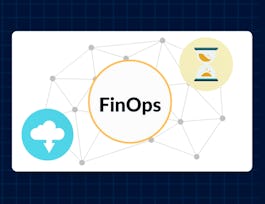DataOps wird von Gartner definiert als "eine kollaborative Datenmanagementpraxis, die sich auf die Verbesserung der Kommunikation, Integration und Automatisierung von Datenflüssen zwischen Datenmanagern und -konsumenten in einem Unternehmen konzentriert. Ähnlich wie DevOps ist DataOps kein starres Dogma, sondern eine prinzipienbasierte Praxis, die Einfluss darauf hat, wie Daten bereitgestellt und aktualisiert werden können, um den Bedürfnissen der Datenkonsumenten des Unternehmens gerecht zu werden" Die DataOps-Methodik wurde entwickelt, um ein Unternehmen in die Lage zu versetzen, einen wiederholbaren Prozess zur Erstellung und Bereitstellung von Analysen und Datenpipelines zu nutzen. Durch die Befolgung von Data Governance- und Modellmanagement-Praktiken können sie hochwertige Unternehmensdaten liefern, um KI zu ermöglichen. Die erfolgreiche Implementierung dieser Methodik ermöglicht es einem Unternehmen, Daten zu kennen, ihnen zu vertrauen und sie zur Steigerung der Wertschöpfung zu nutzen. Im Kurs DataOps Methodology lernen Sie bewährte Verfahren zur Definition eines wiederholbaren und geschäftsorientierten Rahmens kennen, der die Bereitstellung zuverlässiger Daten ermöglicht. Dieser Kurs ist Teil der Data Engineering Specialization, die den Teilnehmern die grundlegenden Fähigkeiten vermittelt, die sie als Data Engineer benötigen.

Neues Jahr. Große Ziele. Höhere Einsparungen. Schalte mit Coursera Plus für $199 ein Jahr unbegrenzten Zugang zum Lernen frei. Jetzt sparen.


(47 Bewertungen)
Empfohlene Erfahrung
Was Sie lernen werden
Verstehen Sie den Prozess, um einen wiederholbaren Prozess zu etablieren, der Strenge und Wiederholbarkeit bietet
Artikulieren Sie den geschäftlichen Wert eines jeden Daten-Sprints, indem Sie die KPIs festhalten, die der Sprint liefern wird
Verstehen Sie, wie Sie die Geschäfts-, Entwicklungs- und Betriebsbereiche des Unternehmens in die Lage versetzen, kontinuierlich neue Datenanforderungen zu entwerfen, bereitzustellen und zu validieren
Wichtige Details

Zu Ihrem LinkedIn-Profil hinzufügen
14 Aufgaben
Erfahren Sie, wie Mitarbeiter führender Unternehmen gefragte Kompetenzen erwerben.


Erwerben Sie ein Karrierezertifikat.
Fügen Sie diese Qualifikation zur Ihrem LinkedIn-Profil oder Ihrem Lebenslauf hinzu.
Teilen Sie es in den sozialen Medien und in Ihrer Leistungsbeurteilung.

In diesem Kurs gibt es 7 Module
In diesem Modul lernen Sie die Grundlagen eines DataOps-Ansatzes kennen. Sie lernen die Menschen kennen, die an der Definition von Daten und deren Aufbereitung für die Nutzung durch eine Vielzahl von Datenkonsumenten beteiligt sind, und erfahren, wie sie zusammenarbeiten können, um Daten für einen bestimmten Zweck bereitzustellen:
Das ist alles enthalten
11 Videos2 Aufgaben
In dieser Lektion lernen Sie die Grundlagen eines DataOps-Ansatzes kennen. Sie erfahren, wie das DataOps-Team bei der Definition des geschäftlichen Nutzens seiner Arbeit zusammenarbeitet, um den Wert, den es für das gesamte Unternehmen erbringt, klar zu formulieren:
Das ist alles enthalten
10 Videos3 Aufgaben
In dieser Lektion lernen Sie die Funktionen kennen, die Sie benötigen, um die Daten in den Repositories eines Unternehmens zu verstehen. Data Discovery wird vor allem dann eingesetzt, wenn der Umfang der verfügbaren Daten zu groß ist, um einen manuellen Ansatz zu entwickeln, oder wenn die Katalogisierung der Daten auf institutioneller Ebene verloren gegangen ist. Dabei werden verschiedene Techniken eingesetzt, um Semantik und Muster in Daten programmatisch zu erkennen. Sie ist ein wichtiger Aspekt bei der Identifizierung und Lokalisierung sensibler oder regulierter Daten, um diese angemessen zu schützen. Generell gilt jedoch, dass das Wissen um die Bedeutung gespeicherter Daten deren Potenzial für Analysen freisetzt. Die Datenklassifizierung bietet eine höhere Ebene der semantischen Anreicherung, die es dem Unternehmen ermöglicht, das Verständnis der Daten von technischen Metadaten auf ein geschäftliches Verständnis anzuheben und die Überschneidungen zwischen verschiedenen Datenquellen anhand der in ihnen enthaltenen Informationen zu erkennen:
Das ist alles enthalten
2 Videos2 Aufgaben
In dieser Lektion lernen Sie, dass das Verständnis der Datensemantik den Datenkonsumenten hilft, zu wissen, welche Daten zur Verfügung stehen, aber es gibt keinen Hinweis darauf, wie gut diese Daten sind. In diesem Modul dreht sich alles um Vertrauen, darum, wie zuverlässig eine Datenquelle sein kann, wenn es darum geht, zuverlässige Daten zu liefern, die für wichtige strategische Entscheidungen verwendet werden können, und darum, ob diese Daten für diejenigen, die sie nutzen möchten, zugänglich sein sollten; ob der Datenkonsument sie sehen und nutzen darf. Dieses Modul befasst sich mit den allgemeinen Dimensionen der Datenqualität und mit der Frage, wie Sie schlechte Datenqualität erkennen und beheben können. Und es wird sich mit der Durchsetzung der vielen Richtlinien befassen, die im Zusammenhang mit der Datenqualität erforderlich sind, nicht zuletzt mit der Notwendigkeit, die Wünsche und Rechte des Einzelnen in Bezug auf die Verwendung seiner Daten zu respektieren:
Das ist alles enthalten
3 Videos1 Lektüre2 Aufgaben
In dieser Lektion lernen Sie, dass die Bereitstellung nützlicher Daten in einem Katalog oft eine Transformation dieser Daten erfordert. Die Modifizierung von Originaldaten kann die Datenaufnahme in verschiedenen Anwendungsfällen optimieren, z.B. bei der Kombination mehrerer Datensätze, der Konsolidierung mehrerer Transaktionszusammenfassungen oder der Manipulation von nicht standardisierten Daten, um internationalen Standards zu entsprechen. In diesem Modul wird untersucht, welche Möglichkeiten der Datenaufbereitung es gibt, wie die Visualisierung genutzt werden kann, um das menschliche Verständnis der Daten und der zu ändernden Daten zu erleichtern, und welche Optionen für die einmalige Nutzung, die Optimierung von Daten-Workflows und die Sicherstellung der regelmäßigen Produktion von Transformationen für die betriebliche Nutzung bestehen. Darüber hinaus zeigt Ihnen dieses Modul, wie Sie die Datenbewegungen und Integrationsaufgaben planen und umsetzen, die zur Unterstützung eines geschäftlichen Anwendungsfalls erforderlich sind. Das Modul basiert auf einem realen Datenverschiebungs- und Integrationsprojekt, das zur Unterstützung der Implementierung eines KI-basierten SaaS-Analysesystems für das Lieferkettenmanagement in der Google Cloud erforderlich ist. Das Modul behandelt die wichtigsten Themen, die für den erfolgreichen Abschluss eines Datenverschiebungs- und -integrationsprojekts erforderlich sind:
Das ist alles enthalten
4 Videos1 Lektüre3 Aufgaben
In dieser Lektion lernen Sie, wie Sie den letzten Data Sprint auswerten, beobachten, was funktioniert hat und was nicht, und Empfehlungen abgeben, wie die nächste Iteration verbessert werden kann.
Das ist alles enthalten
1 Video1 Aufgabe
Das ist alles enthalten
1 Video1 Aufgabe
Dozent

von
Empfohlen, wenn Sie sich für Datenanalyse interessieren
Warum entscheiden sich Menschen für Coursera für ihre Karriere?




Bewertungen von Lernenden
47 Bewertungen
- 5 stars
70,83 %
- 4 stars
25 %
- 3 stars
2,08 %
- 2 stars
2,08 %
- 1 star
0 %
Zeigt 3 von 47 an
Geprüft am 26. Juli 2024
Very clearly explained the DataOps concepts. Thank you very much.
Geprüft am 21. Nov. 2024
Absolutely amazing content! structural and give you an overall view of data management
Geprüft am 31. Juli 2022
Great over view and good breakdown of the concepts

Neue Karrieremöglichkeiten mit Coursera Plus
Unbegrenzter Zugang zu 10,000+ Weltklasse-Kursen, praktischen Projekten und berufsqualifizierenden Zertifikatsprogrammen - alles in Ihrem Abonnement enthalten
Bringen Sie Ihre Karriere mit einem Online-Abschluss voran.
Erwerben Sie einen Abschluss von erstklassigen Universitäten – 100 % online
Schließen Sie sich mehr als 3.400 Unternehmen in aller Welt an, die sich für Coursera for Business entschieden haben.
Schulen Sie Ihre Mitarbeiter*innen, um sich in der digitalen Wirtschaft zu behaupten.
Häufig gestellte Fragen
Der Zugang zu Vorlesungen und Aufgaben hängt von der Art Ihrer Einschreibung ab. Wenn Sie einen Kurs im Prüfungsmodus belegen, können Sie die meisten Kursmaterialien kostenlos einsehen. Um auf benotete Aufgaben zuzugreifen und ein Zertifikat zu erwerben, müssen Sie die Zertifikatserfahrung während oder nach Ihrer Prüfung erwerben. Wenn Sie die Prüfungsoption nicht sehen:
Der Kurs bietet möglicherweise keine Prüfungsoption. Sie können stattdessen eine kostenlose Testversion ausprobieren oder finanzielle Unterstützung beantragen.
Der Kurs bietet möglicherweise stattdessen die Option 'Vollständiger Kurs, kein Zertifikat'. Mit dieser Option können Sie alle Kursmaterialien einsehen, die erforderlichen Bewertungen abgeben und eine Abschlussnote erhalten. Dies bedeutet auch, dass Sie kein Zertifikat erwerben können.
Wenn Sie ein Zertifikat erwerben, erhalten Sie Zugang zu allen Kursmaterialien, einschließlich der benoteten Aufgaben. Nach Abschluss des Kurses wird Ihr elektronisches Zertifikat zu Ihrer Erfolgsseite hinzugefügt - von dort aus können Sie Ihr Zertifikat ausdrucken oder zu Ihrem LinkedIn-Profil hinzufügen. Wenn Sie die Kursinhalte nur lesen und ansehen möchten, können Sie den Kurs kostenlos besuchen.
Sie haben Anspruch auf eine vollständige Rückerstattung bis zwei Wochen nach Ihrem Zahlungsdatum oder (bei Kursen, die gerade erst begonnen haben) bis zwei Wochen nach Beginn der ersten Sitzung des Kurses, je nachdem, welcher Zeitpunkt später liegt. Sie können keine Rückerstattung erhalten, sobald Sie ein Kurszertifikat erworben haben, auch wenn Sie den Kurs innerhalb der zweiwöchigen Rückerstattungsfrist abschließen. Siehe unsere vollständigen Rückerstattungsbedingungen.
 enthalten
enthalten




